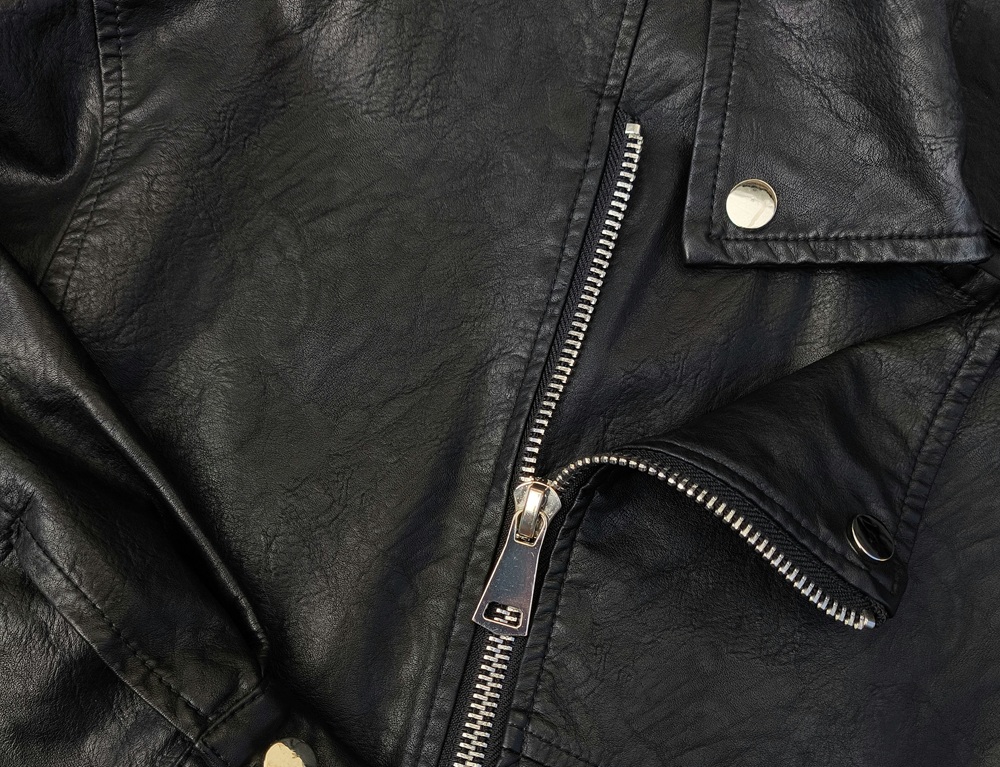High-end as they are, leather jackets also thrive on basic, regular care aside from professional handling. Whether you wear yours through chilly fall nights or tuck it away for summer, its condition depends on what you do daily.
By consistently paying attention to the little things, you protect your jacket from stains, wear, and the gradual damage that builds up over time. As you’ll soon see, even the simplest actions can make a world of difference.
And once you understand how these small habits pay off, you’ll know exactly which steps to adopt to keep your leather jacket looking new for years.
Leather is a natural material that responds to weight and pressure, which means the wrong hanger or a packed closet can leave creases and distort the jacket’s shoulders. Treating this daily habit seriously helps the jacket keep its structure and look sharp for years.
Even the best quality leather collects dust, dirt, and oils after a day of wear. If you ignore it, those particles work into the grain, leaving the jacket looking dull over time. A quick wipe-down after each use is one of the simplest habits you can build to keep the finish looking sharp and the material in good condition.
Leather thrives when it has room to breathe. Storing a jacket in a plastic garment bag may seem protective, but it actually traps moisture inside. Over time, that trapped dampness can cause mildew, odors, and even stiffness in the leather. The best storage solutions allow air circulation, and this keeps your jacket supple and fresh.
Heat is one of leather’s biggest enemies. Hanging your jacket near a radiator, leaving it in a hot car, or exposing it to direct sunlight causes the material to dry, fade, and crack. Even small bursts of heat, like from a space heater, can take a toll over time. Protecting your jacket from these conditions keeps the leather soft and strong.
Wearing the same leather jacket every single day concentrates stress on the same seams, zippers, and high-friction areas. Over time, this speeds up fading, stretching, and thinning, especially around the shoulders and sleeves. Giving your jacket a break by rotating it with other outerwear is one of the simplest ways to extend its life.
The best way to protect your jacket is to act fast. Instead of rubbing, which can push the stain deeper, gently blot with a soft cotton cloth or sponge and let the area air dry. If the stain is stubborn, it’s always best to trust a professional leather cleaner.
Conditioning keeps leather supple, soft, and protected from drying out. However, over-conditioning can clog pores, darken the material, and create a greasy feel. Applying a thin coat every few months, depending on climate and usage, is enough. When in doubt, consult a leather cleaning specialist for product recommendations.
Conditioning keeps leather supple, soft, and protected from drying out. However, over-conditioning can clog pores, darken the material, and create a greasy feel. Applying a thin coat every few months, depending on climate and usage, is enough. When in doubt, consult a leather cleaning specialist for product recommendations.

Leather care has its own rhythm, and that’s why if you own a jacket, it’s important to practice small daily habits that keep it looking its best. However, to ensure it truly lasts, nothing compares to Professional Leather Cleaning.
At Dallas Parkway Cleaners, we bring you over 50 years of expertise in fur and leather care, something average dry cleaners simply can’t match. Leather and fur are luxurious, timeless materials, but they’re also delicate and easily damaged if treated the wrong way. From cracked leather and faded colors to matted fur or stubborn stains, one mistake can ruin an investment piece forever.
That’s why our specialists use industry-approved techniques to carefully clean, condition, and rejuvenate everything from leather jackets and suede coats to mink stoles and fox trims.
Want to learn more about our Leather and Fur Cleaning and Restoration Service?
Get in Touch with Dallas Parkway Dry Cleaners for Inquiries
Phone: (214) 624-6189
Email: Sophia@dallasparkwaycleaners.com
Our Address
